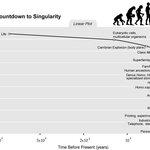Science Education & Policy

The National Science Foundation and various other government groups with more funding than knowledge of the public wastes billions of dollars on STEM (Science Technology Engineering and Mathematics) outreach, using the strange mentality that smart kids who might otherwise become veterinarians or game designers need to become scientists and engineers or America will collapse.
In reality, we produce far more Ph.D.s than can be employed so this fetish with higher education is more like inventing a problem so that government can solve it. The generation of scientists in America today…

I confess. I am a stem cell scientist.I might even be an evil scientist because you see my lab works with human embryonic stem cells.
Hopefully even if I am an evil scientist, I am not an evil mad scientist, but that probably depends on who you ask.
This is not what I am here to confess in this blog or specifically in this blog post, but I thought I should just tell you about me for background.
One thing that I am here to confess is that I am not your normal, every day stem cell scientist, but rather I am a bit of a rebel in that I am a scientist who talks and blogs publicly about what I…

Those who have been following my blogs, may have noticed that I develop certain patterns, which I then use to 'think through' certain issues or habits in science, or other intellectual endeavours. This blending between science and philosophy has mainly been done to test the self-referentiality of PAC.
Methodological Stuff:
Introduction
Patterns
Patterns, Objectivity and Truth
Patterns and Processes
Complexity and Randomness
Complexity and Postmodernism
Complexity and Rationality
Complexity and Professionalism
The Pattern Library:
A Pattern of Difference
A Pattern of Feedback
The…

The Dutch translation of Ray Kurzweil's 2005 bestseller “The Singularity is Near: When Humans Transcend Biology” (the title says it all!) is about to be released, so this post on 'practical PAC' will be a summary of my objections to this idea. The Singularity was a case study in my research to see if I could analyse the claims with PAC. This post will probably not reveal any new information for people who are into this particular transhumanist ideal (both enthusiasts and critics), but it was a good exercise to test the methodology of PAC with.
Methodological Stuff:
Introduction
Patterns…

The last posts in this series will discuss some of the practical issues of performing research on complex themes.
Methodological Stuff:
Introduction
Patterns
Patterns, Objectivity and Truth
Patterns and Processes
Complexity and Randomness
Complexity and Postmodernism
Complexity and Rationality
Complexity and Professionalism
The Pattern Library:
A Pattern of Difference
A Pattern of Feedback
The Hourglass Pattern
The Pattern of Contextual Diminution
Practical PAC:
Performing Research on Complex Themes
In my previous posts I have to some extent redefined a lot of philosophical…

According to Karl Popper, there are two contexts at work when trying to understand science. One is called 'the context of discovery', the other 'context of justification'. In many ways all human cognitive activities share similar divisions; art for instance also tends to fall apart in discussions on the intrinsic qualities, the skills, and mastery of the craft on one side, and discussions on the meaning, the purpose, and the place of art in society on the other. Philosophy (of science) itself knows many discussions on the issues related to discovery (e.g. Kuhn's discovery of paradigm shifts…
Springer has commissioned an edited volume about the singularity hypothesis and related questions, intelligence explosion, acceleration, transhumanism, and whole brain emulation.
“The book examines answers to central questions which reformulate the singularity hypothesis as a coherent and falsifiable conjecture, examine its empirical value, and investigate its most likely consequences, in particular those associated with existential risks”, blah blah blubber.
Academic Philosophers
Extended abstracts where invited; this abstract was flat out refused on the grounds of:
“some of the…

Now we've covered the relationships with postmodernity in the previous post, (I promise not to bring it up again, but I have recently been accused quite often to be 'almost postmodern', which -being an engineer myself- I find rather absurd) it is time to turn our attention to an Enlightenment favourite, namely rationality.
Methodological Stuff:
Introduction
Patterns
Patterns, Objectivity and Truth
Patterns and Processes
Complexity and Randomness
Complexity and Postmodernism
The Pattern Library:
A Pattern of Difference
A Pattern of Feedback
The Hourglass Pattern
The Pattern of Contextual…

You've seen the advertisements on television; schools that market heavily with dubious promises of how wonderful the job market is, but then students who incur student loan debt to get those degrees - loans which are unlimited since the government in the early 1990s said higher education meant more money - find that in a market where everyone has some sort of degree or another, it doesn't mean much.
Now the government wants to solve the problem it created by making some schools at least show their classes will have some value, requiring "career college programs to better prepare students for…

In my previous post, I defended a 'post-modern' stance in science, as I consider quest for singular concepts to explain all kinds of things to be somewhat outdated. Or, to be more precise, it is rather stupid to consider oneself a 'complexity thinker' and then believe that singular concepts can explain everything. This tie between post-modernism and complexity has been elucidated in a much better way than I can, by philosopher of complexity Paul Cilliers in his ground-breaking book, so I will not delve into this issue further.
Methodological Stuff:
Introduction
Patterns
Patterns,…